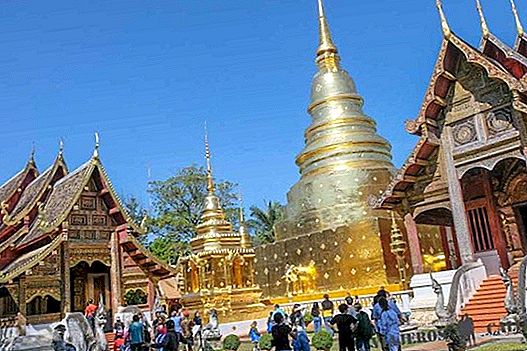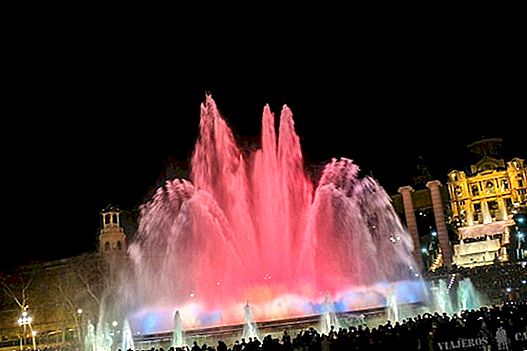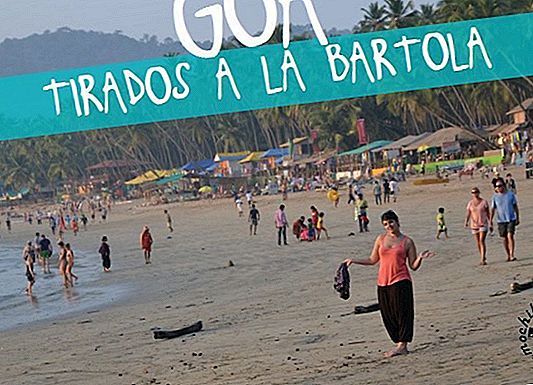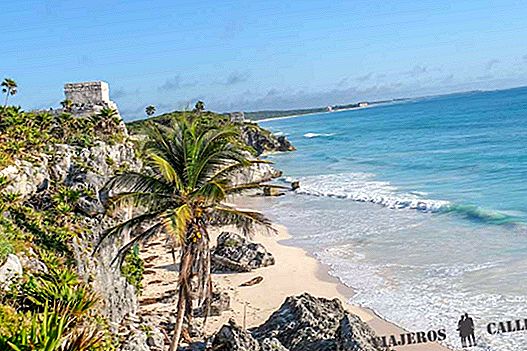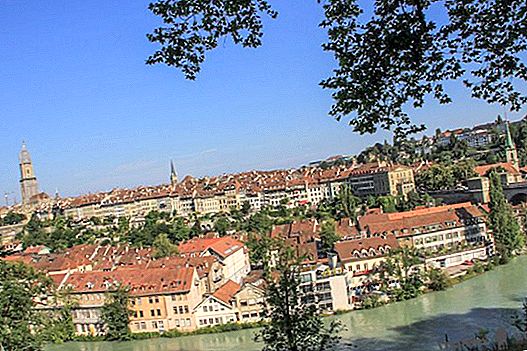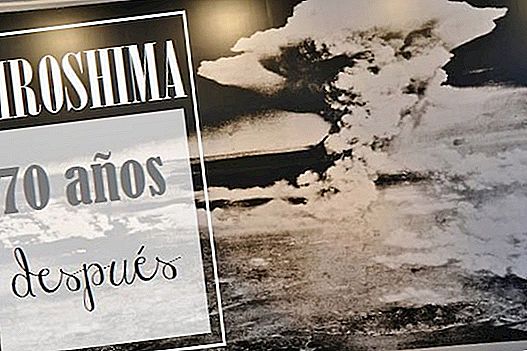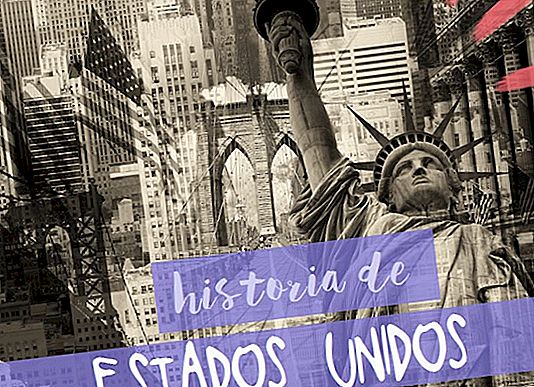
I don't even know why we are getting into this eggplant. Write in a single post the United States history (briefly and easily too) is a crazy job. Peeeero, we know that there is someone out there who, like us a few weeks ago, had no great idea of the history of this country. A story not too old, but certainly interesting ... that's for sure!
We warn you, in the end this post has not come out so briefly (ups!). If the more than 4,000 words that are about to arrive scare you, jump directly to the end that there is a nice video-summary and a link to Ivoox to fall in love with Diana Uribe and her podcasts! But uh, we encourage you to read the whole article 😉
And another thing we want to clarify: we don't intend to tell in detail all the United States history, it would be crazy and we don't know so much :-p But if you want to discover something else, you're in the right place. We go there (if we are masochists):
PRECOLOMBINE TIME AND “DISCOVERY” OF AMERICA
No, in 1492 Christopher Columbus did not discover America. It would be more correct to say that he arrived in America since it was there for a long time and others, before the Italian, had already set foot in that enormous territory. In fact, if we speak as in this case of the United States of America, Columbus never stepped on them.
But who busy what we call today USA by then? The Native American tribes. And how did they get there? Ahhh, we would like to have a clear answer to this issue, although there are only theories ... the one with the strongest say that the different groups of Native Americans descend from Siberian hunters who came to America through the Bering Strait, during a glaciation.
Some of the most famous tribes are:
- Apaches
- Cherokees
- Cheyennes
- Navajos
- Blackfeet
- Kiowas
- Mohicanos
Although there were many more, all with their culture, clothing, beliefs and different language. The truth is that the topic is so interesting that you can (see, get in another eggplant!) To prepare an exclusive post.
Spoiler: the white man, the westward expansion and the railway (iron horse) will end the vast majority of these ancestral tribes a few years later, sending the few survivors to reserves ... but this is another story.
THE COLONIZATION
While the Spanish people they were in charge of evangelizing Central and South America, the north was in the hands of British, French and Dutch. The first to arrive is John Cabot, who in 1497 explored the northern coast of Delaware, although it is a John Smith (surely if I say Pocahontas sounds to you) who founded, in 1607, the first permanent British settlement: Jamestown.
1620 is another very important date: in that year the first pilgrims arrive aboard the Mayflower. Are the puritans (in great majority) that they look for a new life opportunity and escape from the England of Henry VIII, famous for the rupture with the Roman Catholic Church.
There is a substantial difference between the Spanish and British colonization of America: the former were in search of wealth and of spreading the Catholic religion in the New World, while the Pilgrim Fathers only sought to start a new life, although it was not a life too funny, and if not, read "The Scarlet Letter" (and if it still does not work, know that the Puritans abolished Christmas: buuu).
But not everything was bad in Puritan society: for the first time they were free men and, as such, they made decisions for themselves. They also created the Thanksgiving Day to thank God and the Indians who gave them land and food in the first winter (the Mayflower arrived late and could neither plant nor harvest ... without the Indians they would have starved quickly).
Little by little, English settlers multiplied and the first formed 13 colonies: Massachusetts, New Hampshire, Rhode Island, Connecticut, New York, Pennsylvania, New Jersey, Delaware, Maryland, Virginia, North Carolina, South Carolina and Georgia.
THE WAR OF INDEPENDENCE (1775-1783)
This conflict, which lasted between 1775 and 1783, had at 13 colonies fighting Britain to get, once and for all, independence.
It must be remembered that, at that time, Britain was the strongest power in the world, with an invincible naval fleet thanks to which they controlled world trade (imports and exports). But there was a problem: after winning the Seven Years War, Britain began taxing the 13 colonies with new rates (like the one of the seals in 1765) to be able to recover the enormous expenses of war and to be able to administer the new territories won.
This, of course, did not sit well with the settlers who wanted to be autonomous and free. We can say, then, that the War of Independence had its origin in commercial conflicts and in desire, repressed for too long, of autonomy and freedom by the 13 colonies.
There was two episodes keys for war to explode: the Boston Massacre of 1770, in which 5 Boston men were killed by British soldiers during a demonstration against the new taxes, and the tea riot, when Britain imposed a monopoly on the sale of tea in the colonies. As a form of rejection, the colonists threw the entire shipment of tea into the sea and Britain began to tremble ... I knew that I could no longer control the desire for autonomy of the 13 colonies.
Thus began the War of Independence that, a little later, captured international attention: the colonies were very prosperous and other powers such as Spain, France and the Netherlands saw the opportunity to reduce English supremacy. They did well, since after the end of the War the colonies, guided by George Washington, gained independence; France obtained Senegal and Trinidad and Tobago; Spain got Florida and Holland all the Asian colonies.
The end of the War of Independence was formalized with the Treaty of Paris of 1783, although the key date in the history of American independence is undoubtedly that of July 4, 1776: that was when the United States was born as such, after approval among all representatives of the colonies of the Declaration of Independence.
FIRST YEARS OF INDEPENDENCE AND THE PROBLEM OF SLAVERY
After the end of the War of Independence, the 13 colonies were already a single united country, although in reality there were still differences and fragmentations. In 1787 the delegates of the colonies met in Philadelphia where they wrote the United States Constitution. In 1789 George Washington He was elected first president, a position he would hold for 8 years. Treasury, Justice and War departments were created and little by little the first political parties (Federalist and Republican) were emerging.
The United States was thriving and not only economically: it bought Louisiana from France and Florida from Spain and expanded land westward. The more the country grew, the more the differences between the northern and southern states.
It is still curious how slavery was present in a country so lover of freedom that wrote these words in the Declaration of Independence:
“We hold these truths as self-evident: that all men are created equal; that they are endowed by their Creator with certain inalienable rights; that among these are Life, Freedom and the pursuit of Happiness. ”
In general, the Southerners, owners of tobacco and cotton plantations, were favorable to slavery, while the Northerners were morally against (which does not mean that they recognized the rights of citizens as slaves, as the road to freedom of the blacks of America will be long and complicated).
THE WAR OF SECESSION (1861-1865)
Remember that the north and south were very different:
- The north, democratic and religious, it had an economy that was based on various sectors (industry, commerce, agriculture, livestock).
- The southAnglican and Catholic, based its economy on a society that slaves cotton, tobacco and sugarcane.
It was with the arrival of Abraham Lincoln to the presidency in 1860 when the rant on slavery was extended, for him the country could no longer be "half slave and half free". A year later7 of the southern states decided to separate of the country, thus beginning the Civil War.
The country is divided into two parts: the south (confederates and slavers) and the north (federal and abolitionist, also called Yankees) and soon the battles begin ... The first victories are obtained by the south, guided by General Lee, although soon Things will change. The north, which had a naval fleet, imposes a blockade on the southern ports that, unable to trade, sink into misery. We must also bear in mind that the north is more numerous (due to industrialization, new inhabitants do not stop arriving for work and many of them join the abolitionist cause). After the conquest of New Orleans and the battle of Gettisburg, in 1865 the South surrenders.
After the war, a constitutional amendment declared that the Union between all the North American States is indissoluble, and abolished slavery.
The Civil War only lasted 4 years, but in the American collective it was a difficult war to overcome: more than 1.5 million men died and the country was very touched, after all it was still a war between brothers .
Lincoln, after being elected president again, was killed by a slave.
The era that follows the Civil War is characterized by the desire to keep expanding: It was decided to buy Alaska from Russia and take sides in a new war, the 1898 Hispanic-American that ended the United States taking over Cuba, Puerto Rico and the Philippines. A new territory, the most exotic in the country, was also annexed: Hawaii.
If things went well on the international side, internally there were more problems: the abolition of slavery at all meant the freedom and equality of Africans ... the road to travel was still long and complicated. In 1876 Jim Crow laws were enacted which, until 1965, made the racial segregation It was the daily bread.
Curiosity: the same name is contemptuous since it referred to the spectacle of Thomas Dartmouth Rice, who painted his face black playing an African-American way of mockery.
What were these laws? There were several rules among which we highlight that:
- blacks couldn't vote
- they could not be elected as representatives
- they could not share with the whites several public places (they had “special” bathrooms and schools, separate waiting rooms, on the buses they could only stand or sit in the back area ...)
- neither could they eat with the whites (unless it was to serve them)
- they could never even imply that a white man was lying
- and of course they should never prove to be smarter than a target
Spoiler: During World War II, when many black recruits gave their lives for the homeland, they began to notice an advance in the struggle for equality. Although it was in the 1960s with people like Martin Luther King among others when discrimination ceased (almost) completely.
It should also be remembered that at the end of the 19th century a series of fundamental events occur in the United States history:
- TheGolden fever (1848-1855), when thousands and thousands of immigrants traveled to California (San Francisco area), where large amounts of this precious metal had been found.
- It is in these years where the history of North American Indians it turns (even more) into tragedy since they are definitely slaughtered and expelled of their lands. Thus, 3 centuries of bloody battles between "redskins" and "pale faces" are closed. There are currently about 2.5 million Native Americans, the vast majority live in reserves, territories that occupy less than 3% of the entire United States.
-The strong industrialization gives way to a time of economic boom and of inventions incredible. Some of the most famous names are Edison (he invented among other things the bulb, the telegraph, the phonograph, and the alkaline batteries); the Wright brothers, pioneers of aviation, invented a "flying machine" that could make short flights; Alexander Graham Bell who in 1876 patented the telephone; and Levis Strauss that in 1873 invented a garment that we all wear today: jeans.
- The great immigration: between 1870 and 1910, more than 20 million immigrants landed in the United States (mostly Italian, Irish and German, followed by Jews, Poles and later by Latinos). This changed the face of the country that became the most cosmopolitan in the world.
UNITED STATES IN THE FIRST WORLD WAR
Woodrow Wilson was the president who decided that the United States would take part in the First World War. Although at first he was convinced that this was not his war, after the sinking by a German submarine of the Lusitania, a passenger ship where 1198 people (124 Americans) died, the town began to press. The drop that filled the glass was the filtration of the famous Zimmermann telegram, with which Germany encouraged Mexico to join the War ... attacking the US! (Of course he did not consider it).
Wilson had no choice but to change his mind. For him, that would be the war that would end all wars. Unfortunately he was wrong.
The support of more than 200,000 American soldiers favored the allies who in 1918 won (if you can win) the War. Although as we all know well ... another Great War was beginning to take shape.
THE FABULOUS YEARS '20, PROHIBITIONISM AND DRY LAW
The Dry Law (also known as prohibitionism) was a period of United States history, between 1919 and 1933, during which the production, sale and transportation of alcohol was prohibited. Come on, if you wanted to take a little stick with friends, you were left wanting (or so the moralists believed, juas juas). The dry law came into force after the approval of the Voltead Act, amendment XVIII of the Constitution. * We have read this in the wikipedia and we put it here to look more serious and formal *
Why was this law created? For several reasons: on the one hand there was a strong pressure from moralist and religious groups (at this time laws were passed that prohibited even sending letters with references of a sexual nature, as well as photographs or erotic pictures. forget that the nation was founded by Puritans ...). On the other hand there was a real problem of increased violence.
But the fundamental fact was the “Hull house incident”: In 1913 an Italian who lived in Chicago returned home drunk and wanted to have sex with his wife, pregnant. She rejected him and the bastard hit her. Because of the blows the child was born with malformations and was delivered to the Hull House, a community that received abandoned children.
As a result of this accident, many linked the growing moral decline with alcohol and the prohibitionists got away with it: the Dry Law was given free access.
The objective was to moralize society, although the remedy, in the long term, proved to be worse than "the disease": during the years of Dry Law they were emerging mafias that, taking advantage of the situation, established real contraband empires. The 1920s were the time of the great gangsters, being Al Capone, the most feared and famous gangster. To this we must add the battles between the different criminal gangs and the fact that the police, in many cases corrupt, did not help much.
The price of alcohol, as expected, increased substantially (up to 10 times its former value) and two phenomena emerged: the black market and the speak-easy, clandestine bars, camouflaged by local-cover, where citizens could meet and have drinks. The word speak-easy means "speak low": being the clandestine premises, it was important to maintain a content tone so that no one suspected that behind, for example of a Chinese laundry (true story), there was a bar. To enter a speak-easy it was necessary to know a keyword.
Did prohibitionism work? No, just think that before the Dry Law there were about 15,000 bars in New York and in 1920 there were more than 30,000 speak-easy. Other key facts are those of the mafias who knew how to see the ban as a business opportunity: Al Capone won until 1927 more than 10 million dollars!
In 1933, after recognizing the total defeat of the project, another law (Blain Act) was created that allowed the sale of light alcoholic beverages. Thousands of jobs related to alcohol sales were created, the government won a million in taxes and criminal gangs ceased to have a black market monopoly. Health!
THE GREAT DEPRESSION OF '29 AND THE NEW DEAL
The October 24, 1929 went down in history as the black thursday, the day Wall Street collapsed and the stock market went bankrupt. On October 28 and 29 (Black Monday and Tuesday) they finished the catastrophe and disbelief succumbed to panic.
There were people who committed suicide because they lost everything, others who did so that their families could collect insurance. The country that little by little had become the richest and most powerful in the world, was now in the ruin.
The unstoppable speculative fever and the financial bubble had hit bottom and the United States was preparing for one of the worst crises in its history. Does it sound like something to you?
To all this we must add another "fake joke": Dust bowl, one of the most devastating ecological disasters that the United States lived. It is a terrible drought which affected mainly the central states between 1932 and 1939. The scarcity of water made the soil, deprived of any humidity, to be at the mercy of the wind that created immense clouds of dust that covered the sun. Kansas, Oklahoma, Texas and New Mexico were the states that were harmed the most and more than half a million of its inhabitants emigrated to the West (California mostly).
With the arrival at the presidency of Franklin D. Roosevelt, in 1933, it was decided to promote a new economic policy: the New deal. It consisted, essentially, of several measures such as state aid to banks, devaluation of the dollar, reduction of working hours and raising wages, boosting industrial production, investment in the creation of large public works, incentives to agriculture and reforms in The banking and financial system. At the end of the '30s, the New Deal helped to overcome the economic crisis.
UNITED STATES IN THE SECOND WORLD WAR
As in World War I, the United States initially did not want to get involved in a battle that it did not see as its own. Everything changed on December 7 1941 when the Japanese, led by General Yamamoto, attacked by surprise the American naval and air fleet in Pearl harbor (Hawaii)
Pearl Harbor's was one of the greatest war tragedies in history: in less than 10 minutes the Japanese swept through more than 200 planes, 90 ships and left more than 5,000 men dead and wounded. Roosevelt had no choice and the next day declared war on Japan, meanwhile Germany did the same against the Americans on December 11.
As we all know well, World War II ended on April 25, 1945 although, if we talk about American intervention, we must differentiate two fronts:
The Asian: after years of battles he concluded with the surrender of Japan after the order by President Truman of two atomic attacks (August 6, 1945 in Hiroshima and August 9 in Nagasaki). The effects were terrible, you can find out more in the post we wrote after visiting Hiroshima.
The European: one of the key dates was the day D", on June 6, 1944, in which the landing in Normandy by more than 150,000 soldiers (North American and British). The rapid advance of the Allied soldiers allowed a relative rapid reconquest of the Nazi-occupied France, laying the groundwork for the defeat of the Third Reich and the German surrender that took place on May 7, 1945.
LA POSGUERRA: THE AMERICAN DREAM AND THE COLD WAR
The postwar years are characterized by two very different events: on the one hand, there is the great economic growth and the famous "American dream", on the other the birth of a new war: the Cold War.
The decade of the '50 -60 in the US are the years of opportunities, economic well-being, industry development, appliances, rock n' roll and a phenomenon that will no longer leave us: the consumerism. The atmosphere, at the national level, is relaxed and positive.
On the international side, however, things were much more tense: enmity between the USSR and the United States was increased with the coming to power of Mao Zedong and the establishment of a totalitarian communist regime in China, which created real terror on the part of the Americans that communism spread quickly and dangerously.
The Cold War was a psychological war, a strategic game to achieve the supremacy of each of the two parties over the other, since the duel between the two powers was not geographical, it was mostly ideological and organizational. There were only two choices: good or evil (of course the vision depended on who looked at it). We are in full arms race (even space!) And the nightmare of a possible atomic war He accompanied the world until the fall of the USSR.
VIETNAM WAR (1955-1975)
The Vietnam War is of fundamental historical importance since it was the first live “televised” and that arrived at homes around the world.
The beginnings must be sought in the Indochina War, when the French colonies of Asia claimed their independence. Vietnam then it was divided in two: the south, democratic and pro-American ruled by Ngo Dinh Diem, and the north, socialist and supported by Russia, guided by the leader Ho Chi Minh who wanted at all costs to unify the country. Fear of getting it made the United States enter the conflict: for nothing in the world could they afford another communist country on the map!
Although President Eisenhower initially decided not to send a large number of troops to Vietnam, his successors (Kennedy, killed in Dallas in 1963 and especially Lyndon B. Johnson), tripled the American contingent in Asia. Why? Because of Gulf of Tonkin incident, when the Viet Cong attacked the Maddox ship in this area. Later it was shown that it was a false flag operation full-fledged, to have the support of public opinion and have a true pretext to "go to war."
Johnson took advantage of this conflict to test indiscriminate battle techniques, such as the napalm, which had very serious consequences Among the local population. The Vietnam War left about 6 million victims, 600,000 tons of bombs, km and km of contaminated land and sequels that can still be seen today.
To all this we must add that during the Vietnam War a "Secret War" developed ... Did you know that Laos is the most bombed country in the world? Yes, the US bombed territories of Laos and Cambodia to destroy tunnels and shelters in the Viet Cong. (Today there are territories in Laos that are true minefields).
On the American side, the losses were also enormous: countless wounded and more than 58,000 American soldiers died in a war that the rest of the world saw as useless and bloody.
Media pressure and national discontent forced Nixon (yes, the Watergate Scandal), Johnson's successor, to withdraw troops. We must also have the drama of war veterans, who returned home with terrible psychological consequences and that in many cases were thrown into oblivion.
Was the first war that the United States lost. On April 30, 1975, Viet Cong troops entered Saigon: the country was already unified under a communist regime. But this is another story 😉
UNITED STATES UNTIL OUR DAYS
After the Vietnam War and the Watergate, citizens had lost enough confidence in their rulers. The '70s are the years of street power (Surely if we tell you May '68 you know what we mean!) and little by little the people get great victories: laws in favor of the environment and against nuclear energy or feminist movements that favor the legality of the board or of equal pay. Remember that in the previous decade, African Americans finally managed to repeal racial laws and achieve civil rights ... this will encourage other minorities (such as homosexuals) to fight for the equality. And it was the time of punk music, oh yeah!
The 80s, guided by Regan (the president who was previously an actor!), Is a time of economic growth and recovery. They are also the years of the fall of the Berlin Wall, of the end of the Cold War, of the breakup of the USSR. It was the decade of the technological revolution (in 1981 IBM put the first PC on the market) so thank the '80s for being able to read these XD lines
The decade of the '90s begins with a bad footing: Iraq invades Kwait and in 1991 the Gulf WarClinton arrives at the White House (and Monica Lewinsky as a fellow), an attack on the World Trade Center in New York leaves 6 dead (1993) although no one expects that a few years later that will be the scene of one of the terrorist attacks cruelest in history (and one of the most mysterious and conspiratorial too). In 1996 a bomb killed 168 people in Oklahoma City. But not everything is bad news: the '90s are years of economic well-being (and Friends, Forrest Gump and The Lion King are released!). And we only tell you a couple more things: Spice Girls and Backstreet Boys.
We arrived at the new century, with the fear of 2000 effect (you remember, right?) and with the most real fear of terrorism: September 11, 2001 Two planes crash into the Twin Towers, killing more than 3,000 people. This attack was followed by the decision of President Bush Jr of invade Afghanistan and Iraq and another bloody war begins, very controversial.
In 2008 Barack Obama comes to the presidency with his “Yes, we can”And for the first time a man of color occupies the highest position in the state. Unthinkable only a few decades ago. That year is also the one that starts the global financial crisis, consequence of the collapse of the real estate bubble ... surely this also sounds like you (and even too well).
And now the one who chairs the country is the Trump millionaire, hopefully have no problem to enter the country!
So far our “summary” of the United States Historys. I hope you liked this post and if you have read it completely ... you know you are a champion!
And now, for the laziest:
- In Ivoox you find the channel of World Stories, according to Diana Uribe, and among them a series of chapters of United States history, an idol!
- The super video summary (it's part of Michael Moore's Bowling for Columbine documentary, you probably saw it but if not, you're already taking it!)

